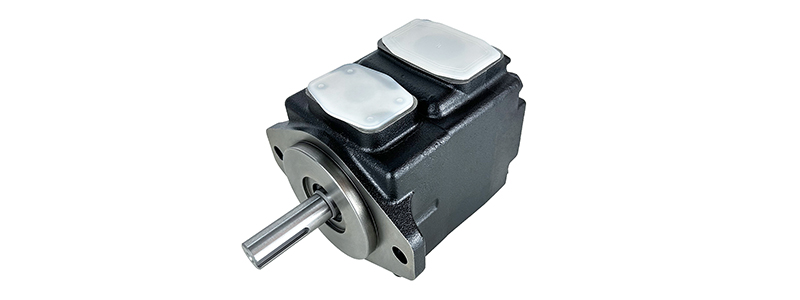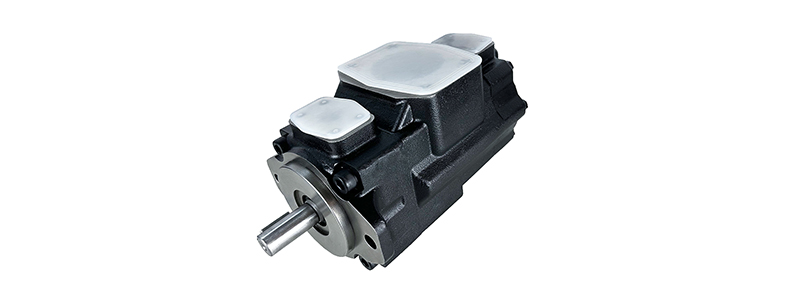How to convert oil pump flow to displacement?
For a general hydraulic oil pump, ignoring the loss, according to its displacement at that time, the discharge flow rate of the hydraulic oil pump is fixed every time it rotates. Therefore, the flow rate at the outlet of the hydraulic oil pump is equal to the speed multiplied by the displacement.
For a constant power hydraulic oil pump, even if the speed remains unchanged, if the system pressure increases, the displacement will automatically decrease and the flow rate will also decrease. Or load-sensitive hydraulic oil pumps, when the system does not operate, the flow rate needs to be reduced, the displacement is automatically reduced, and the output flow rate is also automatically reduced. In short, the reduction of the flow rate is caused by the reduction of its displacement or speed, and it still conforms to the formula of flow = displacement × speed.

The relationship between hydraulic oil pump displacement, flow rate and speed is as follows:
The relationship between displacement and theoretical flow is: qt=nV
In the formula, n is the speed of the hydraulic oil pump; V is the displacement of the hydraulic oil pump.
The actual flow rate refers to the volume of oil actually output by the hydraulic oil pump per unit time when the leakage loss of the hydraulic oil pump is considered. Due to the leakage loss of the hydraulic oil pump during work, the actual flow of the hydraulic oil pump is less than the theoretical flow. That is, q=qt-Δq, where Δq is the amount of leakage.
Rated flow refers to the actual output flow of the hydraulic oil pump when it works at rated speed and rated pressure. The flow rate marked on the product catalog or nameplate of the hydraulic oil pump is the rated flow rate of the hydraulic oil pump.

The displacement of the hydraulic oil pump refers to the volume of the oil discharged by the hydraulic oil pump shaft for one revolution, represented by V, and the unit is mL/r. The displacement of the hydraulic oil pump depends on the geometric size of the seal cavity of the hydraulic oil pump. Different hydraulic oil pumps have different displacements due to different structural parameters.
The flow rate of the hydraulic oil pump refers to the volume of oil output by the hydraulic oil pump per unit time, which is usually expressed by q, and the unit is L/min.
The theoretical flow rate refers to the volume of oil output by the hydraulic oil pump per unit time without considering the leakage loss of the hydraulic oil pump. It is usually expressed in qt and the unit is L/min.
During the oil suction process of the hydraulic oil pump, if the speed of the hydraulic oil pump is too fast, the pressure in the oil suction chamber will be lower than the air separation pressure at the working temperature, and a large amount of dissolved air in the oil will be separated out, dissociated into air bubbles, and generate gas. hole phenomenon. With the operation of the hydraulic oil pump, the air bubbles mixed in the oil are brought into the high-pressure area and broken, and then rapidly shrink, dissolve and disappear. At the moment when the bubbles are broken, a high-frequency impact with a large amplitude is generated in the local area, which causes metal peeling and pitting on the surface of the component. In order to avoid the occurrence of cavitation, it is necessary to study the relationship between the cavitation of the hydraulic oil pump and the maximum allowable speed.
